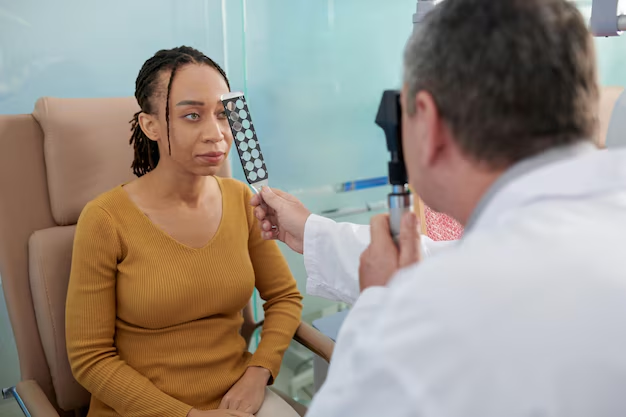Understanding Tuberculosis: What a Positive Tuberculosis Skin Test Looks Like
If you've ever had a tuberculosis (TB) skin test, the sight of a small needle pricking the skin of your forearm might have prompted several questions: What am I looking for next? How do I know if it’s positive? Understanding what a positive TB skin test looks like is essential, especially as tuberculosis remains a significant health concern worldwide. In this article, we will break down the appearance and implications of a positive TB skin test, and dive into related subtopics that enhance your knowledge about this condition.
The TB Skin Test: Basics You Need to Know
Before delving into what a positive TB test looks like, it's crucial to grasp the fundamentals. Known formally as the Mantoux tuberculin skin test (TST), this test involves injecting a small amount of tuberculin purified protein derivative (PPD) into the skin of your forearm. The purpose? To determine whether you have been exposed to Mycobacterium tuberculosis, the bacterium causing TB.
How the Test Works
- Injection: A small needle is used to place the PPD under the top layer of skin.
- Reaction: The site of injection is monitored over 48 to 72 hours.
- Evaluation: A healthcare professional measures the induration (swelling) at the test site.
Recognizing a Positive TB Skin Test
So, what exactly does a positive skin test look like? It's not about the redness. Instead, a positive result is identified by the size of the induration (the raised, hard area) at the site of injection.
Interpreting the Size
- 5 mm or larger: Considered positive for those with HIV, recent TB exposure, organ transplant recipients, or those with immunosuppressive conditions.
- 10 mm or larger: Positive in recent arrivals from high-prevalence countries, injection drug users, or people with certain medical conditions like diabetes or kidney disease.
- 15 mm or larger: Usually positive for individuals with no known risk factors for TB.
Important: The interpretation must be carried out by a healthcare professional, as context and risk factors significantly affect what is deemed "positive."
Possible Reactions and What They Mean
Interpreting the test is not as straightforward as measuring induration. Other factors, such as vaccination history with Bacillus Calmette-Guerin (BCG), might influence the result.
The Influence of BCG Vaccination
- BCG History: If you were vaccinated with BCG, it might cause a false-positive reaction due to the similarity between the vaccine and Mycobacterium tuberculosis.
- Professional Assessment: It's essential to factor in medical history, including BCG vaccination and exposure risk.
When Further Testing is Required
A positive skin test indicates that TB bacteria might be present, but it doesn't confirm active disease. Further evaluation is critical to determine the presence of active TB.
Recommended Follow-up Tests
- Chest X-ray: Helps detect lung abnormalities indicating active TB infection.
- Sputum Test: Analyzes phlegm or saliva to check for active TB bacteria.
- IGRA Blood Test: The Interferon Gamma Release Assay is used for further confirmation when the skin test is positive.
Understanding Latent vs. Active TB
The distinction between latent and active TB is crucial for understanding your health status post-positive test.
Latent TB Infection (LTBI)
- No Symptoms: Individuals don't feel sick and can't spread TB to others.
- Treatment: Preventative treatment might be recommended to avoid progression to active TB.
Active TB Disease
- Symptoms Present: Cough, fever, weight loss, and night sweats are common.
- Contagious: Active TB can spread to others, needing immediate medical intervention.
Common Misunderstandings and Clarifications
TB testing is often paired with myths and misunderstandings, affecting people's perception.
Addressing Myths
- Redness vs. Induration: Redness can occur even in negative tests; only induration size matters.
- Repeated Testing: Frequent testing can lead to the booster phenomenon, where it misrepresents a person's TB status.
- Safety: The test is generally safe, with minimal side effects.
Prioritize Health: Next Steps and Considerations
Understanding your TB skin test result opens doors to proactive health management. Here are some practical steps to take if your TB skin test is positive:
- Consult Healthcare Professionals: Always follow up with a healthcare provider for personalized advice and next steps.
- Long-Term Monitoring: Stay aware of TB symptoms even if your chest X-ray is clear, and follow treatment plans if prescribed.
- Inform Close Contacts: If you're diagnosed with active TB, informing close contacts is essential to preventing spread.
Final Insights: Navigating Your TB Journey
Testing positive on a TB skin test is the start of a journey, not the end. With comprehensive medical evaluation and proactive management, finding out you have potential exposure to TB can be a gateway to better health and prevention of disease spread. Remember, the journey to health relies on informed decisions and collaborative care with health professionals.
🔍 Quick Summary: TB Skin Test Insights
- Test Interpretation: Based on induration size, not redness.
- Follow-up: Chest X-ray and IGRA test for confirmation if positive.
- Symptoms Check: Watch for cough, fever, and weight loss.
- Inform Professionals: Consult healthcare providers for personalized guidance.
- Preventive Care: Consider LTBI treatment to prevent progression.
By understanding what a positive TB skin test looks like and its implications, you empower yourself to take action and maintain your health vigilantly.
